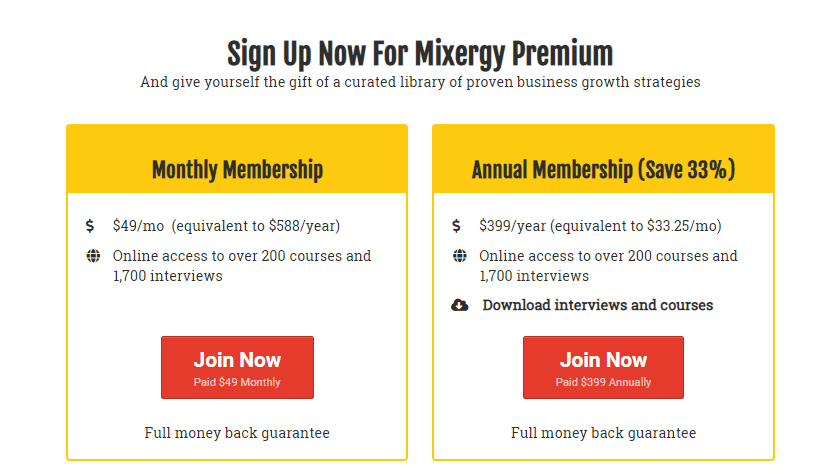7 Sales Funnel Examples to Inspire Your Own
7 sales funnel examples to inspire your own.
Click To TweetDownload Your Very Own Funnel Template
Before you dive head-first into all you need to know about a handful of sales funnel examples, we want to give you the opportunity to download your very own marketing funnel content mapping template. With this handy-dandy template, you will be able to easily craft ideas and content for your own marketing funnel and keep track of the expectations and examples within your business. Download now!The Sales Funnel
The sales funnel will normally have four to five steps — depending on how you see it — which are outlined below.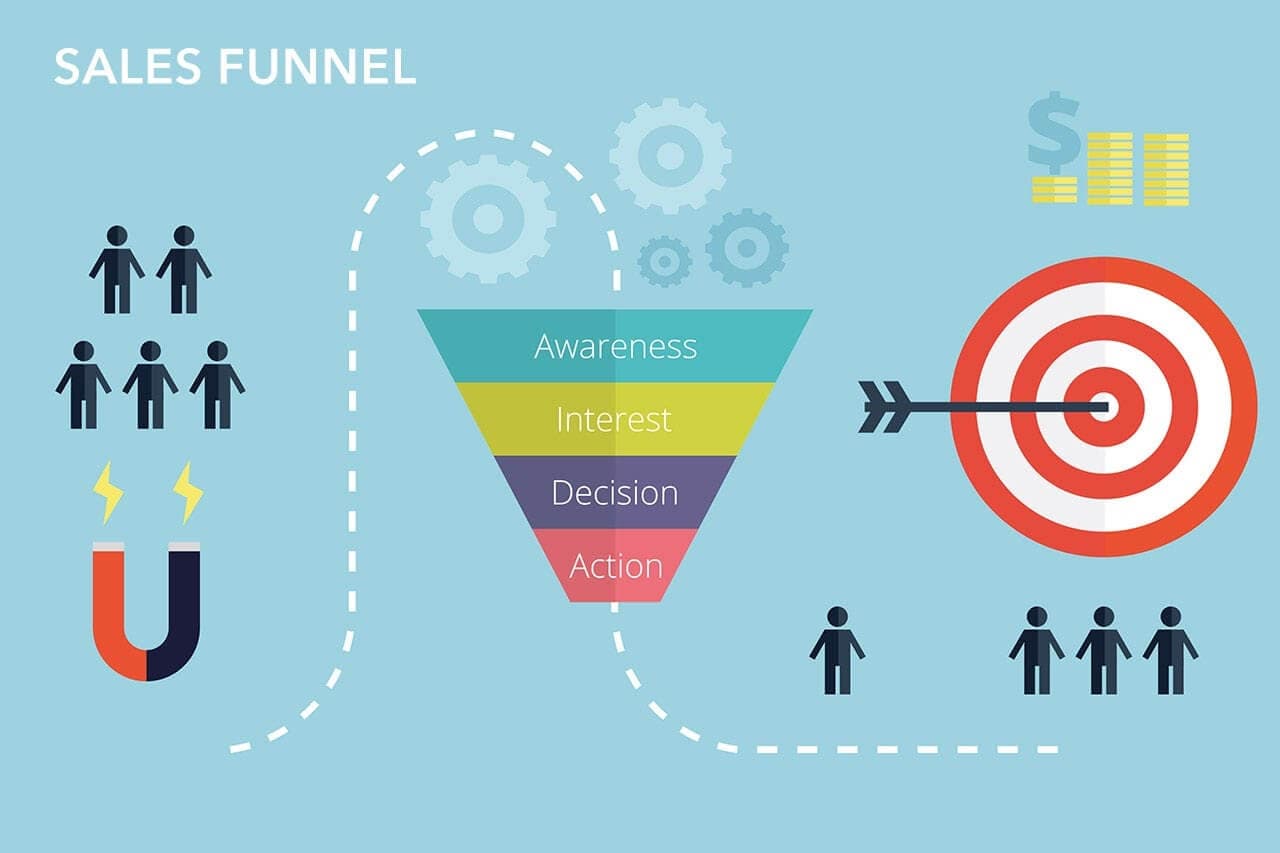 Entrepreneur
Entrepreneur
Awareness
The potential customer makes initial contact with your company and is introduced to your brand for the first time. This will normally be the fruit of the labor from your marketing activities, which will include things, like creating blog posts, podcast episodes, and hosting webinars. You have now generated a new lead.Interest
The second step is all about lead nurturing. You are discovering the potential needs of your newly acquired leads and engaging with them for the first time. You will normally do this through opt-in forms followed by email marketing. The right email drip campaign will allow you to guide your lead down the purchase journey using automation.Decision/Offer a Solution
Now that you have established a relationship with your lead, you need to let them know you could potentially have a solution to their problem. For example, you could offer them a trial signup or a free tool.Close the Sale
Once your lead has tried out your service through a trial, demo, or free version, it’s time to close the sale. You could sweeten the deal by offering them a time-sensitive discount or bonus with each purchase — allowing the lead to save money as part of a one time offer (OTO).Follow Up
If you have more than one service or good to sell, your old customers are your best customers, which is why you need to continue to reach out to them when it’s relevant and further build your relationship. Now that we know what your sales funnel should look like, let’s talk about something most guides — that pledge to give you everything you need to create a sales funnel — don’t talk about.
While having an outline can be helpful, a good sales funnel example could be what inspires your own sales funnel creation. Here are seven sales funnel examples you should take a look at:
Now that we know what your sales funnel should look like, let’s talk about something most guides — that pledge to give you everything you need to create a sales funnel — don’t talk about.
While having an outline can be helpful, a good sales funnel example could be what inspires your own sales funnel creation. Here are seven sales funnel examples you should take a look at:
1. ConvertKit
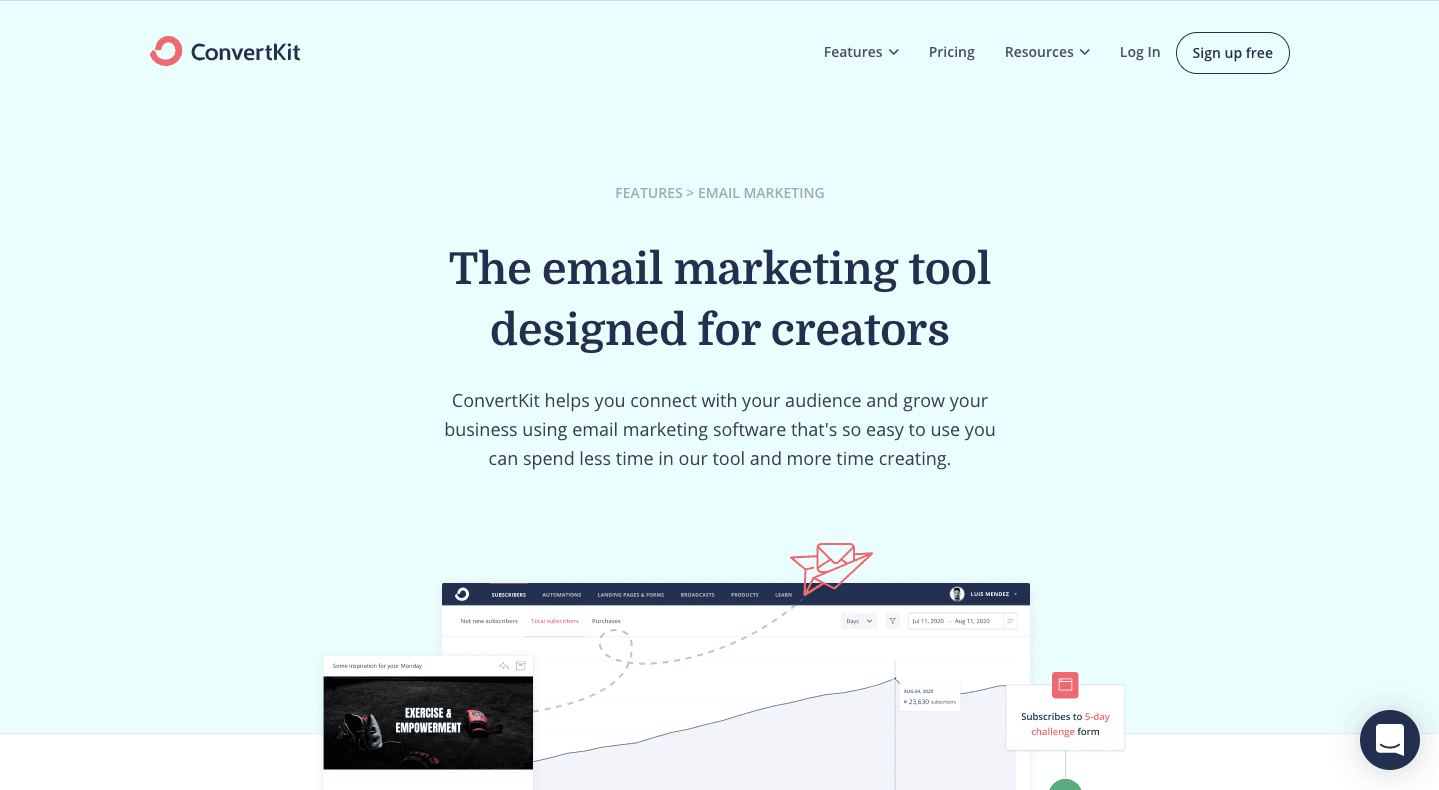 Type of sales funnel: Partnership webinars funnel
ConvertKit, an email marketing software for bloggers, is a great example of how webinars can help even the smallest of businesses grow.
The company was generating $98k in sales every month before Nathan Berry decided to put all of his time and efforts into growing ConvertKit. The company had only grown because of word-of-mouth efforts from past or present customers. This was not enough, which is why Nathan decided to go all-in on hosting webinars in partnership with ConvertKit affiliates.
After hosting over 150 webinars in under a year, ConvertKit grew from making between $70k to $80k per month to earning well over $600k every single month in revenue.
Type of sales funnel: Partnership webinars funnel
ConvertKit, an email marketing software for bloggers, is a great example of how webinars can help even the smallest of businesses grow.
The company was generating $98k in sales every month before Nathan Berry decided to put all of his time and efforts into growing ConvertKit. The company had only grown because of word-of-mouth efforts from past or present customers. This was not enough, which is why Nathan decided to go all-in on hosting webinars in partnership with ConvertKit affiliates.
After hosting over 150 webinars in under a year, ConvertKit grew from making between $70k to $80k per month to earning well over $600k every single month in revenue.
@ConvertKit, an email marketing software for bloggers, is a great example of how webinars can help even the smallest of businesses grow.
Click To TweetWhat Does This Sales Funnel Look Like?
Let’s dive a little deeper into what this sales funnel looks like. ConvertKit used their present pool of customers — that were mostly bloggers — to reach more people within the industry itself. They did this by maintaining a wide-open affiliate program that anyone can join, and then hosting webinars with pretty much any affiliate of theirs that was up for it. Lead Feeder
This meant that Nathan was mostly hosting webinars with bloggers that had an audience full of fellow bloggers — the ideal audience for his product. Each webinar was packed with information that could be used to create a great email marketing campaign. Instead of pushing his product on to people who were watching the webinar, he did his best to actually help them.
At the end of the webinar, the viewing audience was left with so many great ideas that signing up for the ConvertKit trial was just a good way to try out those new ideas. The webinar content was helpful without being pushy, which is what helped increase conversions.
He would even give away free courses, t-shirts, and freebies to people who attended his webinars. In the oversaturated world of webinars, this was a breath of fresh air.
You were walking away from the webinar with hundreds of dollars worth of free stuff and the ability to try out ConvertKit’s software for free — no questions asked. That being said, anyone’s first experience with the brand was great. They were generous to a fault, and even if the lead did not pay for the software, they had entered their sales funnel.
Lead Feeder
This meant that Nathan was mostly hosting webinars with bloggers that had an audience full of fellow bloggers — the ideal audience for his product. Each webinar was packed with information that could be used to create a great email marketing campaign. Instead of pushing his product on to people who were watching the webinar, he did his best to actually help them.
At the end of the webinar, the viewing audience was left with so many great ideas that signing up for the ConvertKit trial was just a good way to try out those new ideas. The webinar content was helpful without being pushy, which is what helped increase conversions.
He would even give away free courses, t-shirts, and freebies to people who attended his webinars. In the oversaturated world of webinars, this was a breath of fresh air.
You were walking away from the webinar with hundreds of dollars worth of free stuff and the ability to try out ConvertKit’s software for free — no questions asked. That being said, anyone’s first experience with the brand was great. They were generous to a fault, and even if the lead did not pay for the software, they had entered their sales funnel.
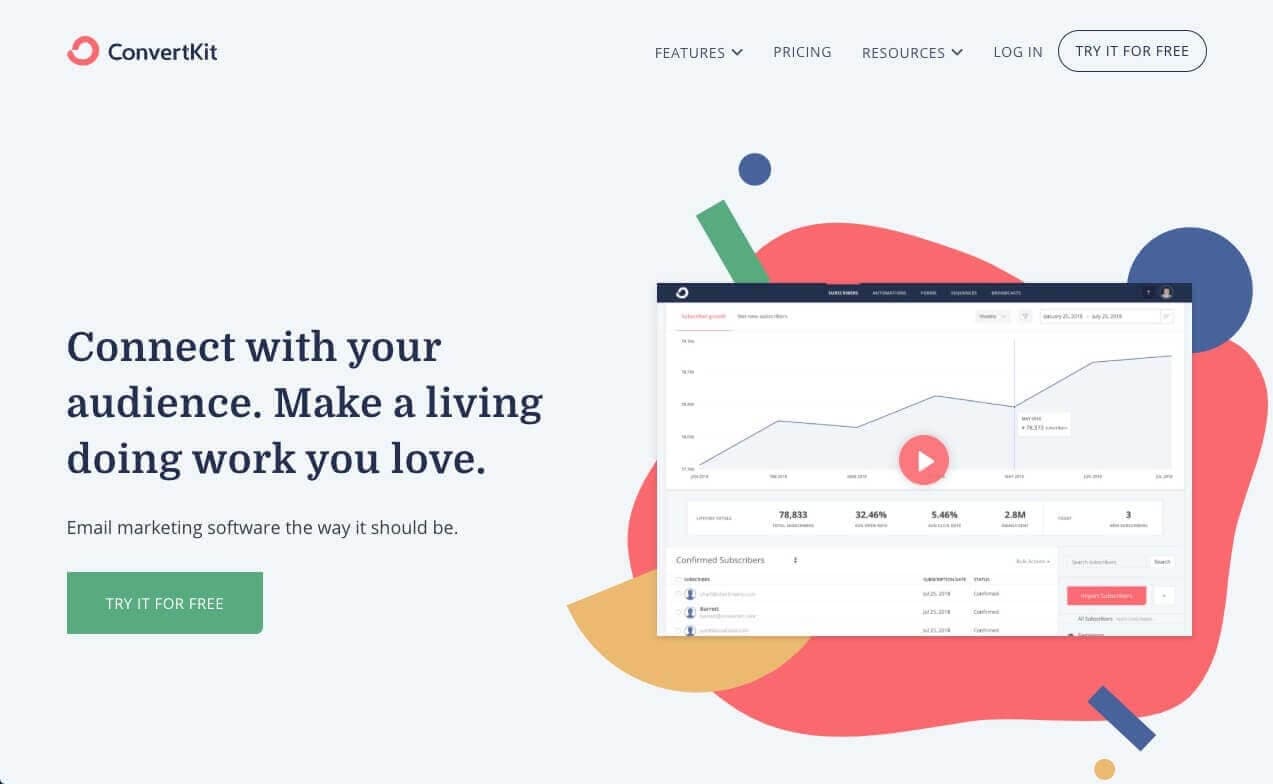
Who Should Use This Funnel?
Big companies can afford to spend thousands to find the right influencers to promote their products. On the other hand, for smaller startups, this might not be a financially viable plan. This is why startups with limited budgets but loads of time could benefit from this sales funnel. Even if you only have 50 affiliates to partner with, they could lead to 50 more. You don’t need to invest in anything other than a webinar tool and some email marketing software.Unique Aspects of the Funnel
This funnel works well if you have a very narrow target audience. In the case of ConvertKit, that audience was bloggers. This definitely contributes to the success of their funnel, since they were able to target their freebies at the right audience and position themselves as being the right guy for every blogger. Instead of trying to be a big fish in a big pond, they satisfied themselves with a smaller pond, and it paid off. They were bloggers who had created an email marketing software for blogging, which was then being targeted towards bloggers. Niching down will do you good, if you choose to go this route.2. Russel Brunson
Most sales funnels will offer a free trial — or maybe even a discounted price — but for big-ticket items that go into the thousands of dollars, companies need to do better than that. This is especially true when you want more than just the customer’s email address (i.e. traditional opt-in form). Russel Brunson offers a completely free book to customers who are willing to simply type in their name and address. You will have to pay for shipping, but the actual product is 100% free. A lot of leads are often left wondering if this is too good to be true, but if you are in the world of marketing and sales funnels, you’d have already guessed that every penny spent on the free book is made up for down the line.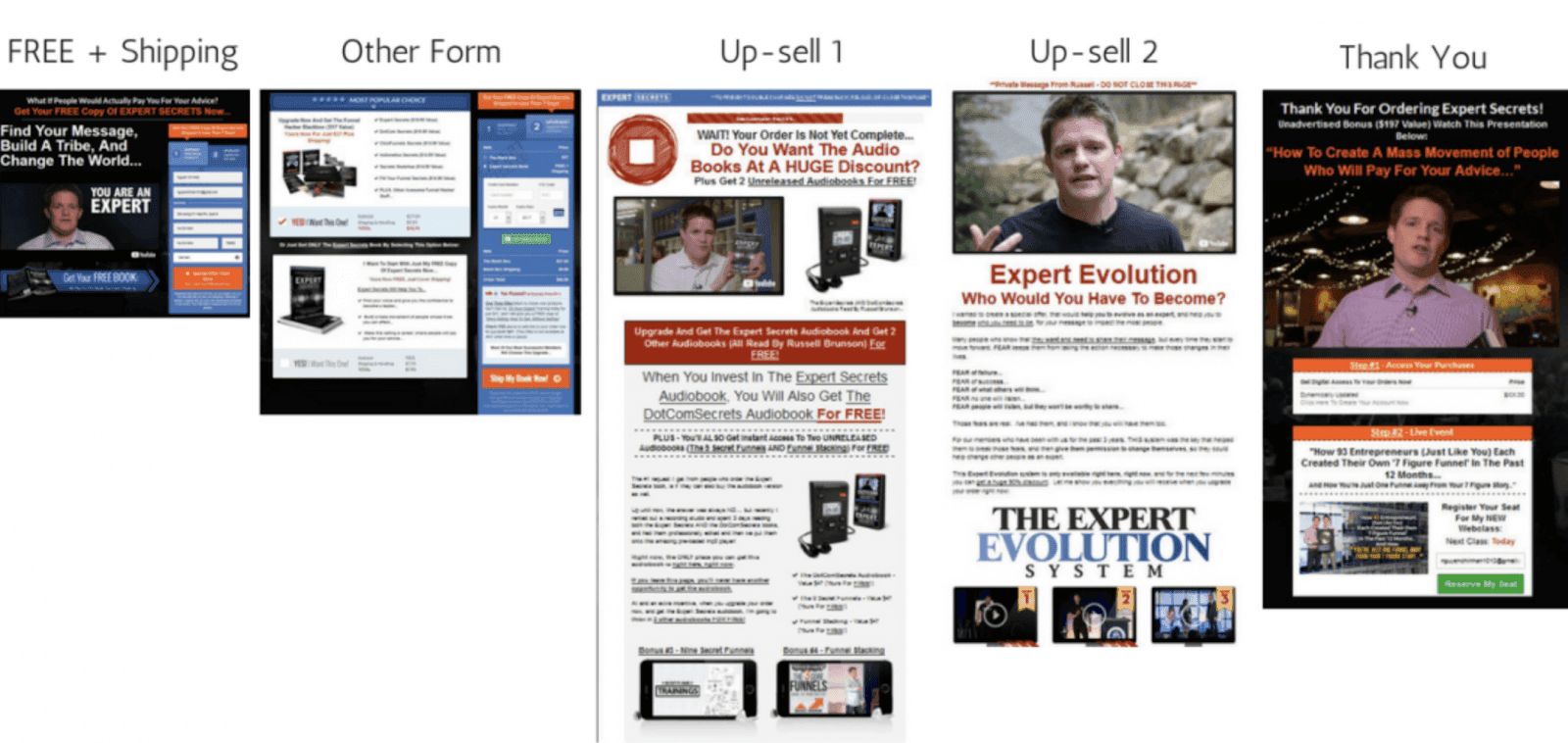
What Does This Sales Funnel Look Like?
The customer initially learns about Russel Brunson through social media, paid ads, or blog posts. They are then moved down the sales pipeline towards the landing page that offers the free book in exchange for their information (i.e. address and email). This is the first domino to fall in a chain of events that will follow. The customer will then be offered a one-time offer for one of Brunson’s products straight after they place the order for the book. This could be a time-sensitive discount or a bonus item with each purchased service. In short, Russel is willing to put his money where his mouth is when it comes to his sales funnels, and it pays off. If he spends $15–20 sending that free book to each lead, he has a long list of leads that could potentially buy much more costly items from him down the road. Even if a lead was to only buy a $37 book from him, Russel would still be making a $17 profit from that lead.Who Should Use This Funnel?
This funnel is ideal for companies that need to sell multiple items with a lot of big-ticket items that will follow. While $20 may be a lot of money down the drain for someone with only one product to pitch, it is well worth it for a company that wants to upsell multiple products to each lead. If a smaller company that wants to offer a freebie via an opt-in form, it would make more sense to offer something digital, such as an eBook or free course. LFA Capsule Fillers does this, so they can ask for more information about the lead before putting them into a sales funnel.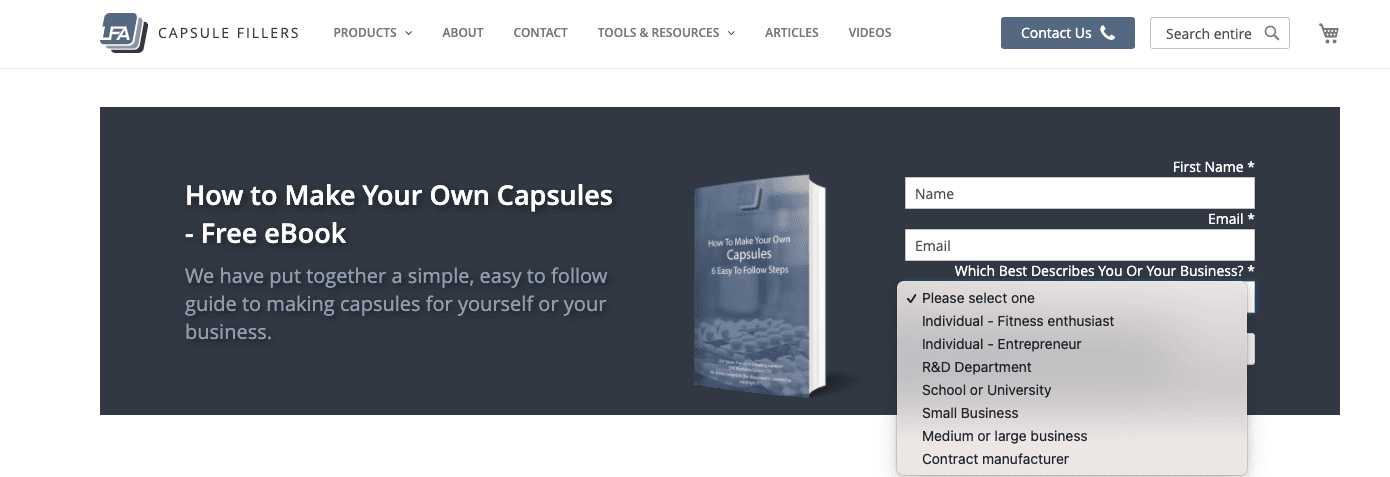 The free eBook — offered to anyone willing to to be added to their newsletter — asks leads what sort of business they identify as (e.g. individual, small business, university, etc.).
This will then help the company put them into a sales funnel that is most appropriate for their type of business. Even if you have a smaller budget to work with, a free eBook could also be a great way to generate leads and learn more about your potential customers.
The free eBook — offered to anyone willing to to be added to their newsletter — asks leads what sort of business they identify as (e.g. individual, small business, university, etc.).
This will then help the company put them into a sales funnel that is most appropriate for their type of business. Even if you have a smaller budget to work with, a free eBook could also be a great way to generate leads and learn more about your potential customers.
What Exactly Are Upsells?
Russel’s sales funnel works because he has a lot of upsells that will follow the initial free book. An upsell is a product that is a higher value item than what the customer has purchased previously or is thinking of purchasing. This is similar to what the brand, ProFlowers, does when a customer is going through the checkout process. Once you select the bouquet of flowers you want, the website will immediately suggest an upgrade to a bigger bouquet.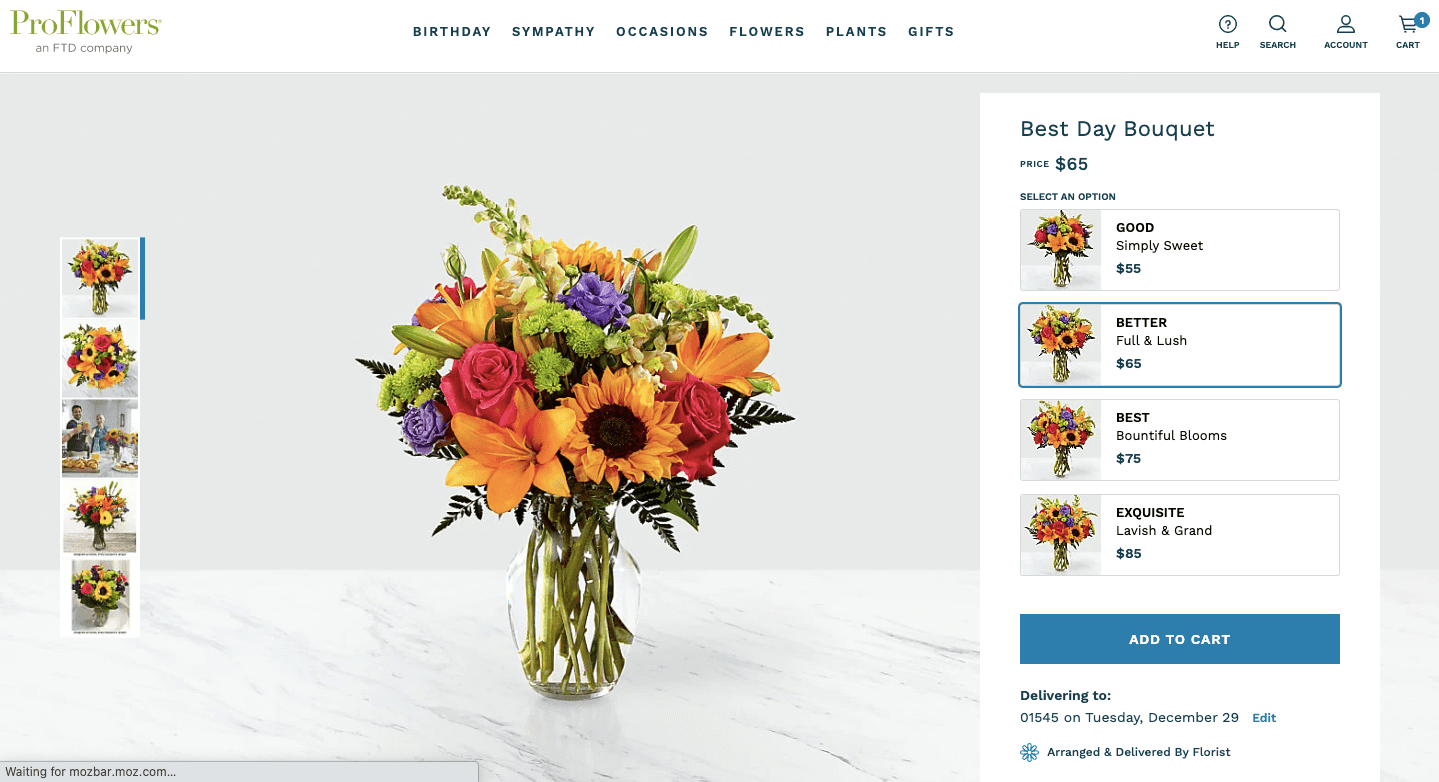 Once you are done selecting the size, ProFlowers will also try to sell cross-sells to customers. These include greeting cards and teddy bears.
Cross-selling is when companies try to sell related products to the customer before they checkout. Physical stores and restaurants, like McDonald’s, do this as well — when they suggest buying fries with your hamburger.
Once you are done selecting the size, ProFlowers will also try to sell cross-sells to customers. These include greeting cards and teddy bears.
Cross-selling is when companies try to sell related products to the customer before they checkout. Physical stores and restaurants, like McDonald’s, do this as well — when they suggest buying fries with your hamburger.
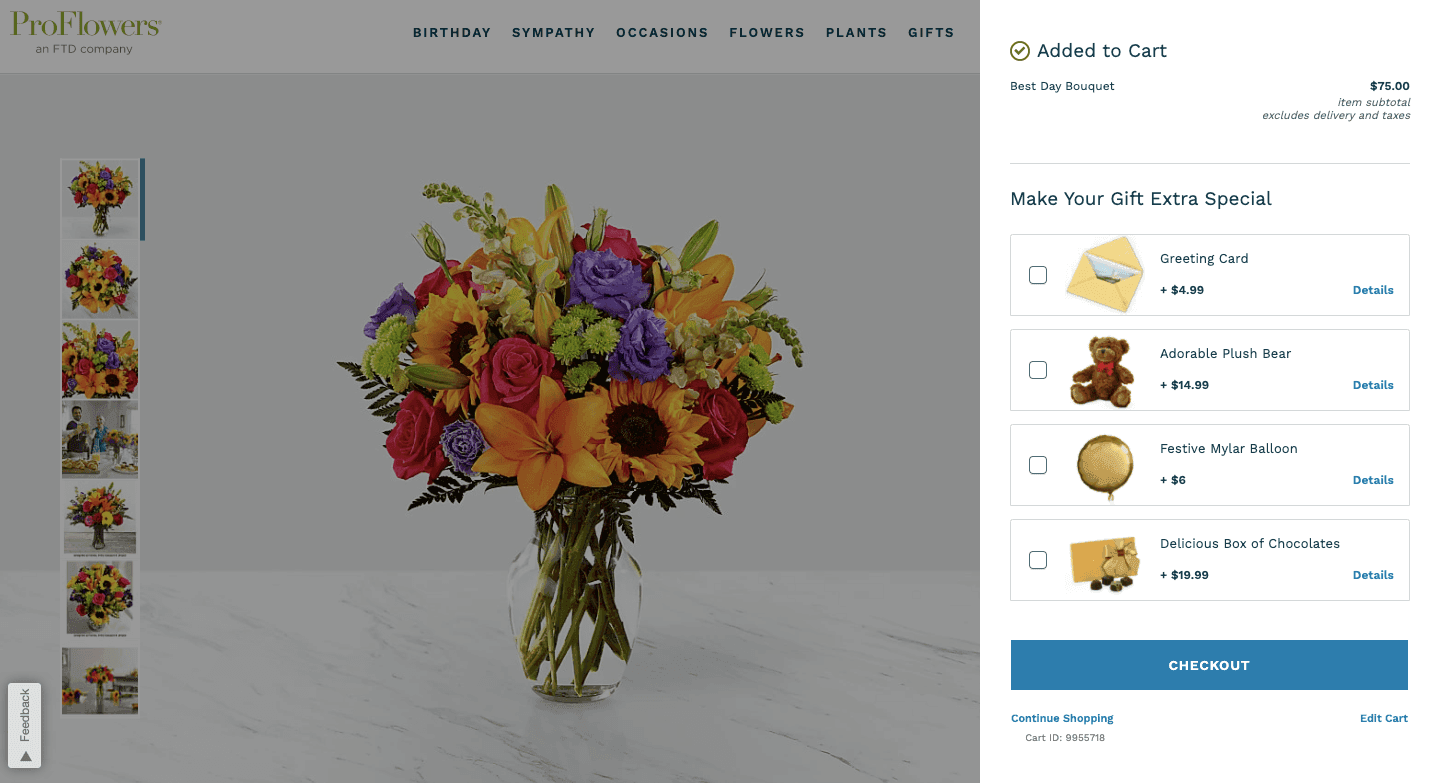 This selling technique is true to far more expensive items as well, such as Tesla cars. The company offers customers the option to customize their car with additional features in the interior and exterior, adding the autopilot feature, and more during the checkout process.
This selling technique is true to far more expensive items as well, such as Tesla cars. The company offers customers the option to customize their car with additional features in the interior and exterior, adding the autopilot feature, and more during the checkout process.
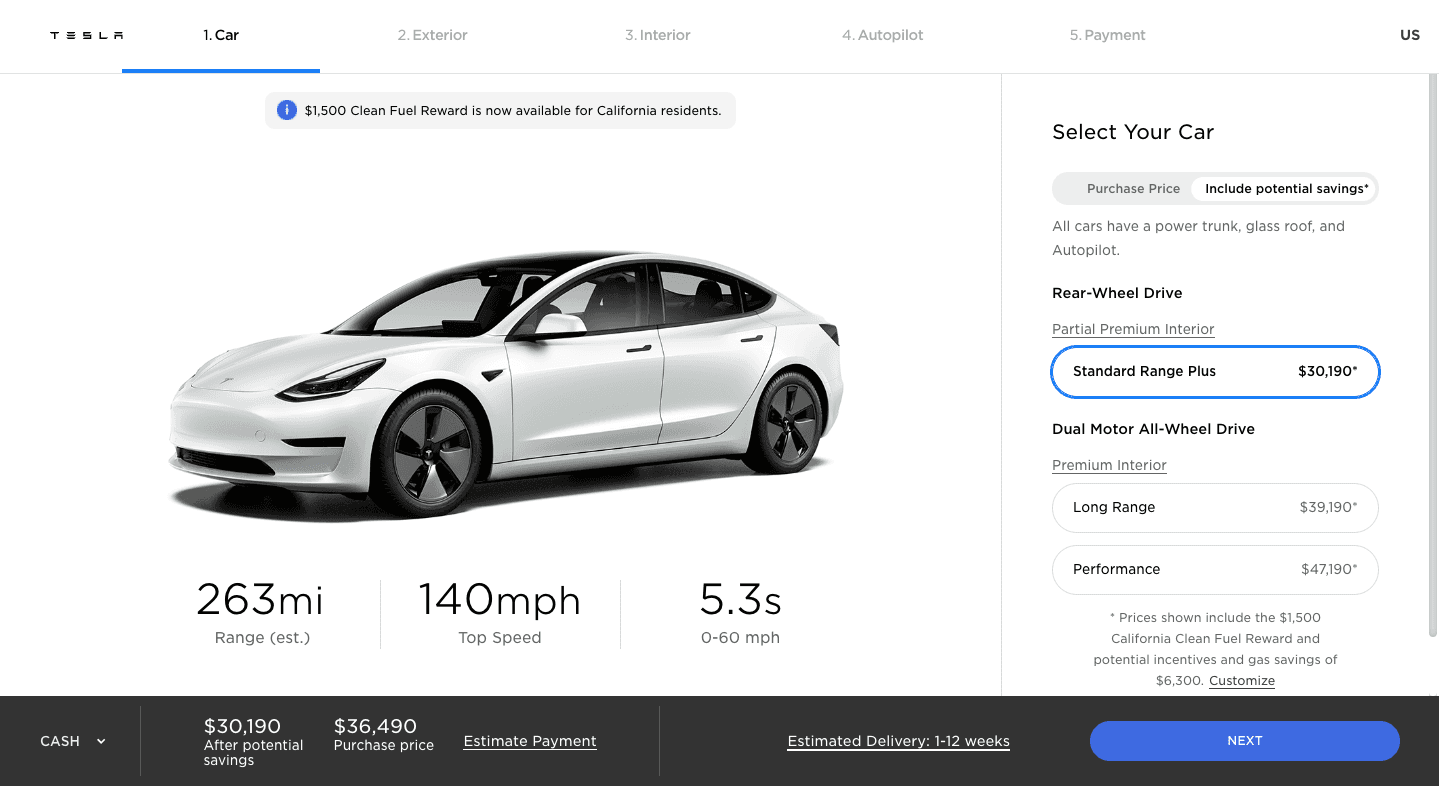
3. CoSchedule
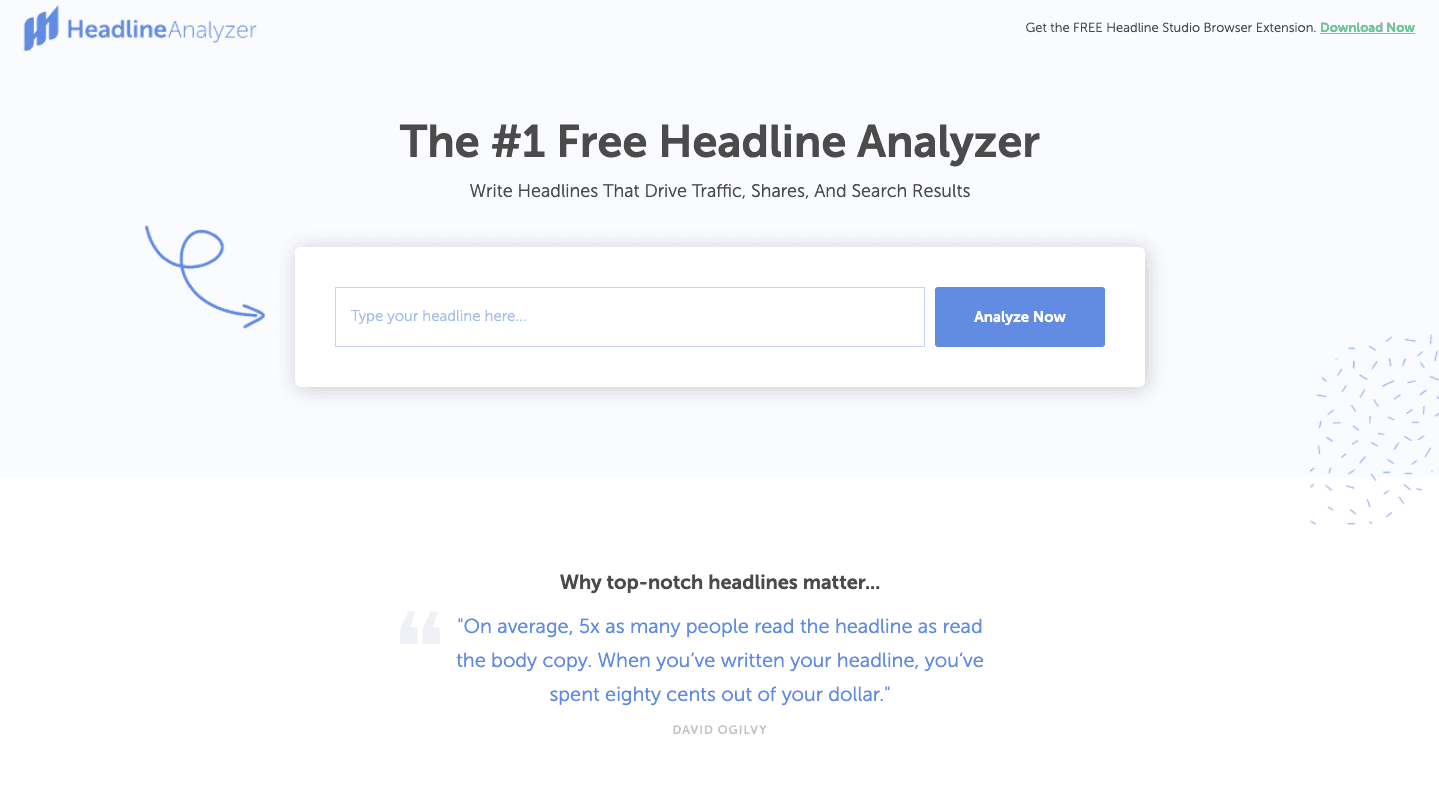 The CoSchedule sales funnel uses a tool (Headline Analyzer Studio) to bring in people who might be interested in their premium Headline Studio Pro. This is a great way of getting people interested in their product.
The free tool is available with no deadline and with no strings attached, which is what makes it even better.
The CoSchedule sales funnel uses a tool (Headline Analyzer Studio) to bring in people who might be interested in their premium Headline Studio Pro. This is a great way of getting people interested in their product.
The free tool is available with no deadline and with no strings attached, which is what makes it even better.
CoSchedule's Headline Analyzer Studio is available with no deadline and with no strings attached.
Click To TweetWhat Does This Sales Funnel Look Like?
A very common sales funnel is the offering of a free trial month, but CoSchedule takes it up a notch by offering a completely free tool instead. The Headline Analyzer Studio allows people to test out their headlines, and then work on them based on suggestions that the tool delivers. Every blogger knows how important it is to have a great headline that goes alongside each blog post, which is why the upgrade is well worth it for a lot of people.Who Should Use This Funnel?
This funnel works well for services that need to be test run for months on end before making the final leap (i.e. spending money on the service). CoSchedule knows that headline analyzers are available online by the dozen, which is why they have their free tool to show everyone exactly what they can offer. Once someone is happy with the services they are receiving, they can choose to upgrade to the premium version of the product. This could be compared to Amazon as well; Amazon lets you use their platform for free, but a premium account gives users the benefit of free shipping — among other features.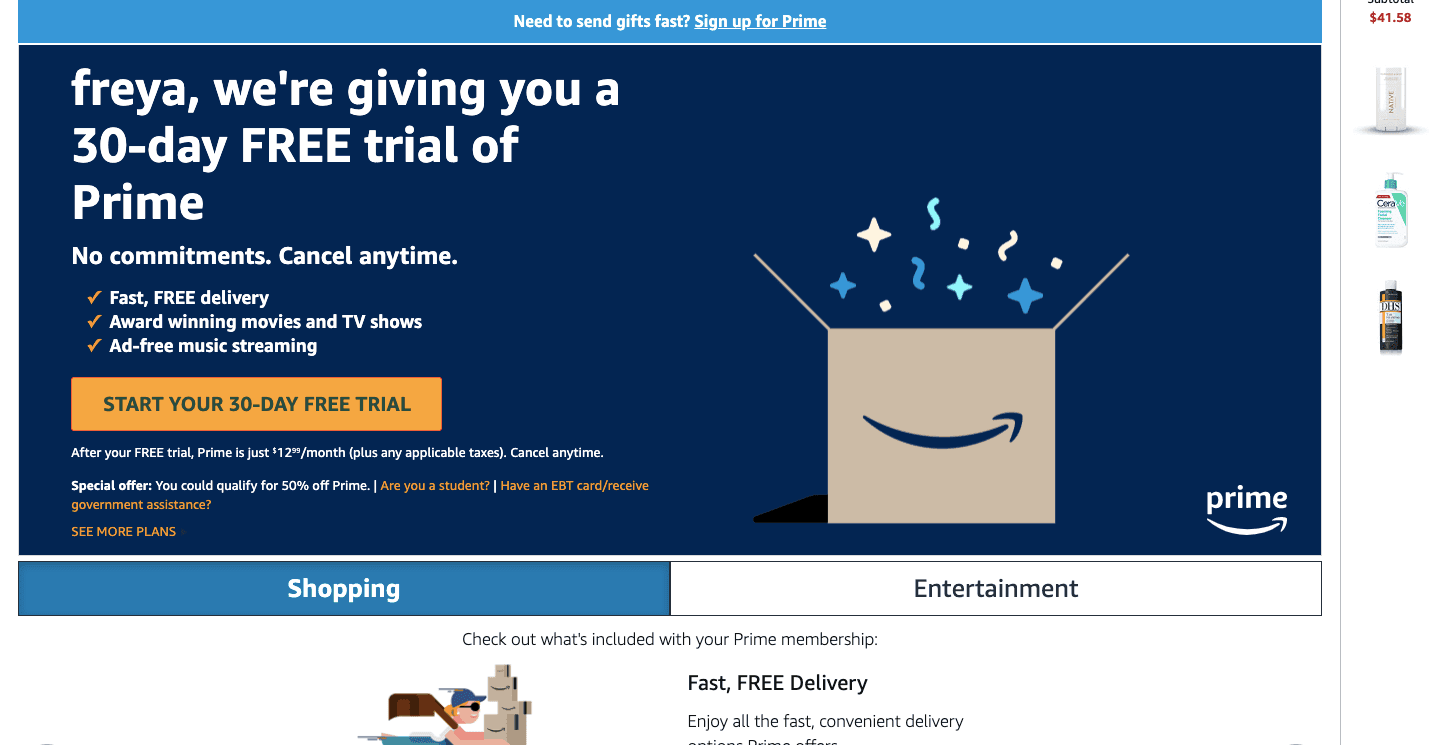 It might not be a tempting purchase to someone who has never used Amazon, but for someone who has, it’s well worth the money.
It might not be a tempting purchase to someone who has never used Amazon, but for someone who has, it’s well worth the money.
4. Mailshake
The Mailshake sales funnel allows customers to book a free demo of the product before they invest a minimum of $60 per month on the item. This allows the company to give potential customers the demo they need without having to offer free trials.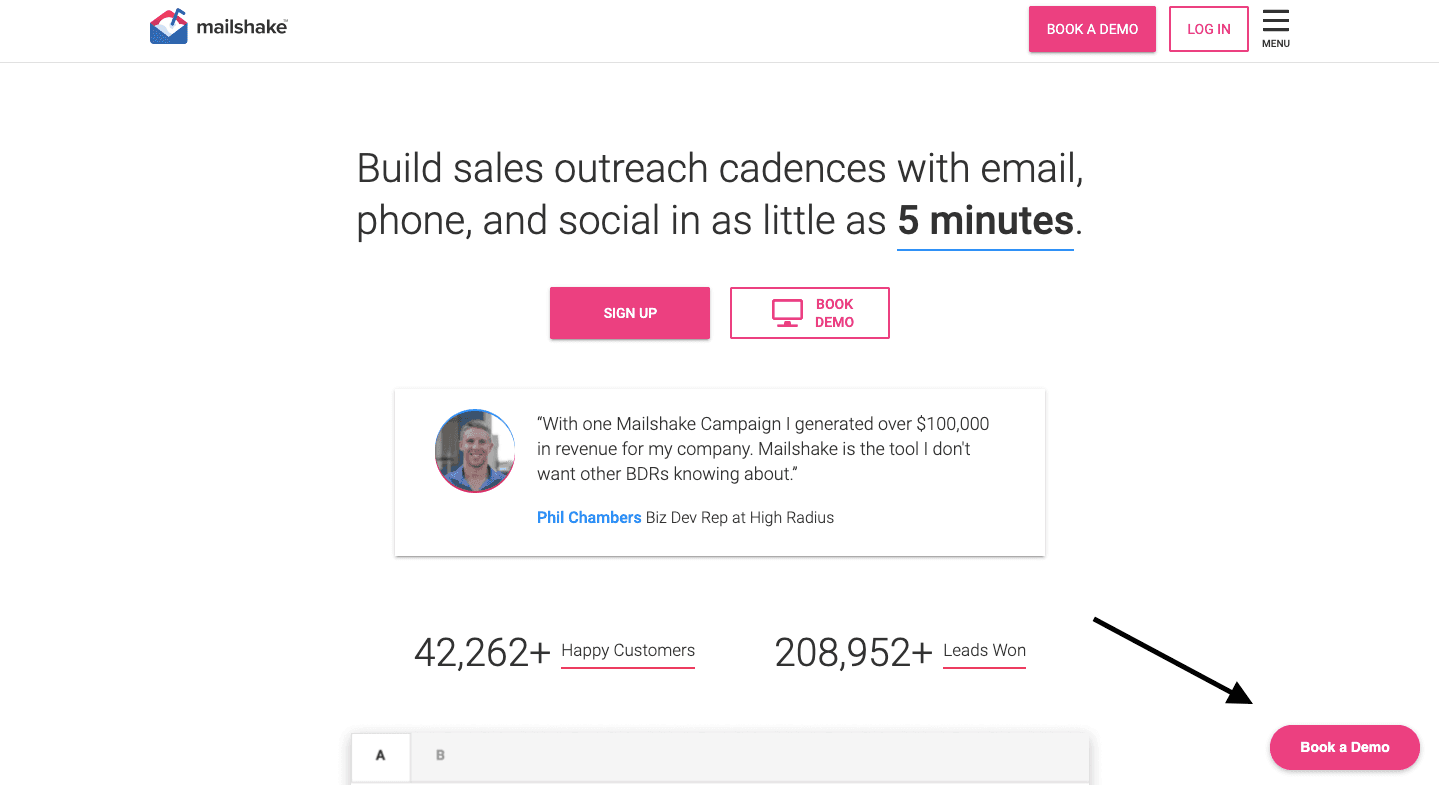
What Does This Sales Funnel Look Like?
Once the potential customer learns about Mailshake — this could be through affiliates, blog posts, webinars, etc. — they will then visit the Mailshake landing page and book a demo. After they select the “Book a Demo” button, Mailshake will prompt the lead to select a date and time (within their time zone) to book a 30-minute demo session.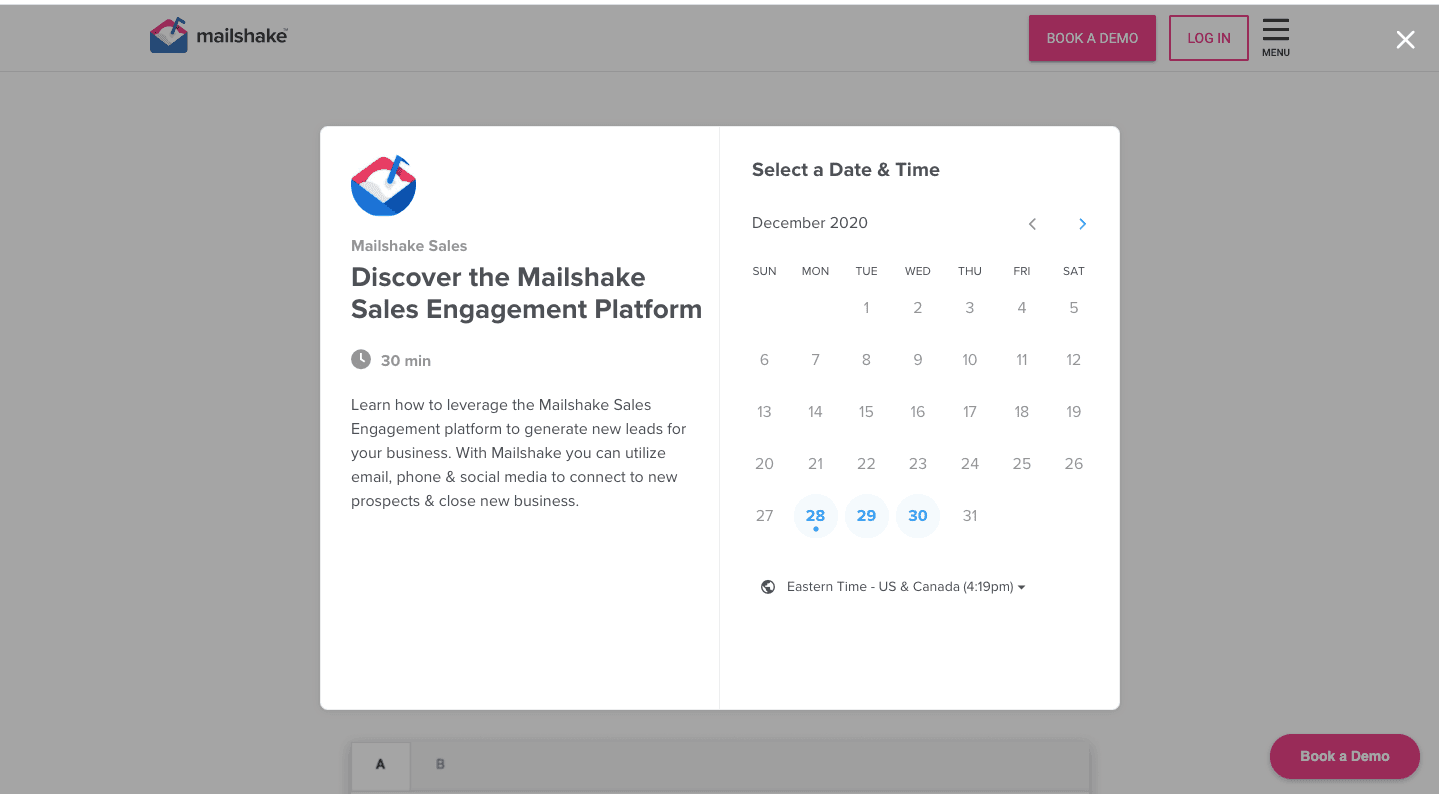 Once the session is finalized, Mailshake will send you a confirmation email along with multiple reminders down the road. The demo will then take place, which will include a member of the Mailshake team giving you and anyone else who has booked into that time slot a quick run-through of how the software works and how it can help you.
The session will allow leads to get any potential queries they have resolved.
Once the session is finalized, Mailshake will send you a confirmation email along with multiple reminders down the road. The demo will then take place, which will include a member of the Mailshake team giving you and anyone else who has booked into that time slot a quick run-through of how the software works and how it can help you.
The session will allow leads to get any potential queries they have resolved.
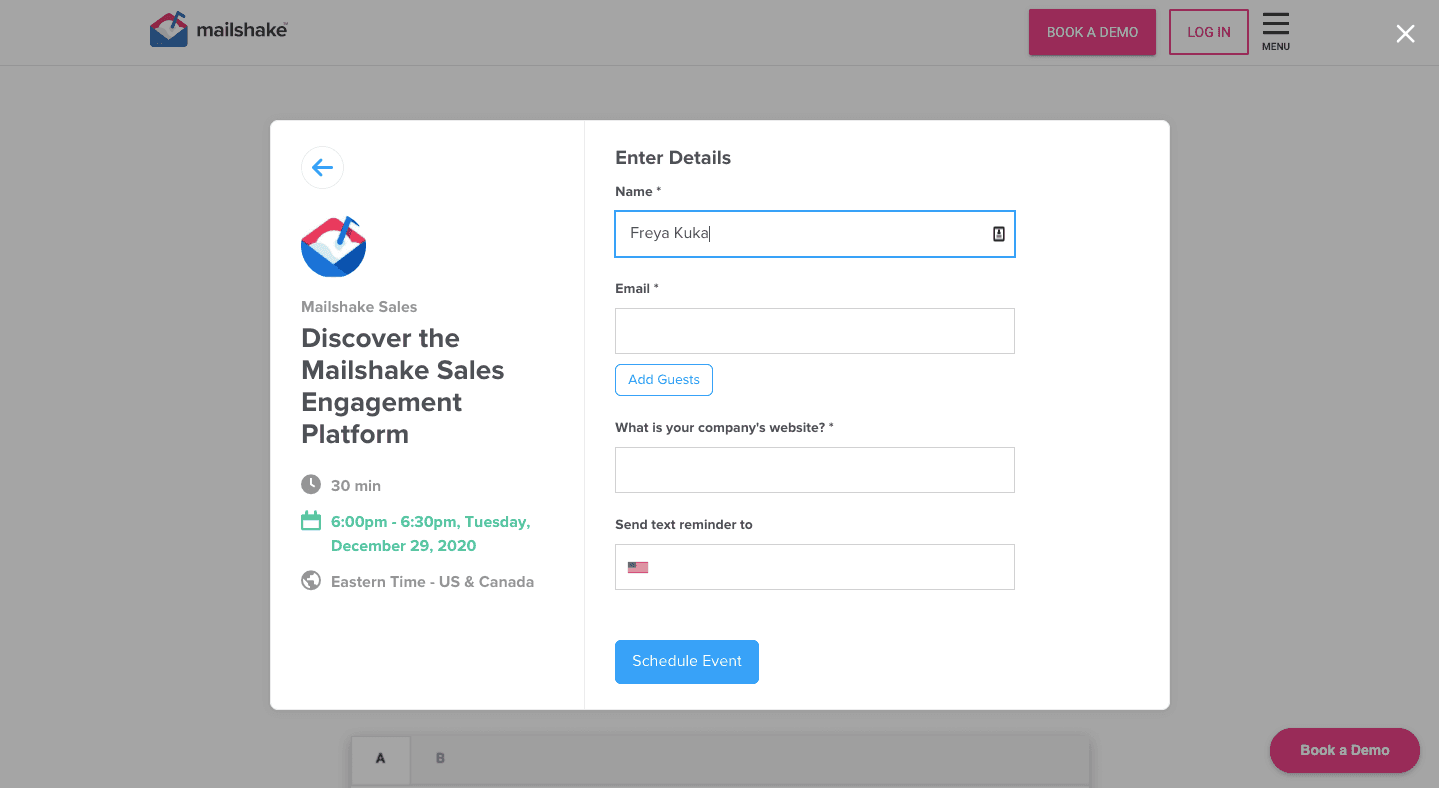
Who Should Use This Funnel?
This sales funnel can work well for expensive services that are normally targeted towards companies. They might not want to offer a trial for a couple of reasons: either they do not think it’s worth the time and resources, or they feel that the company would not be able to make up their mind — even after using the service for a trial period. This is true in the case of outreach software, since there are multiple options on the market and each service has multiple features that are best displayed through a demo. This sales funnel also works for expensive services that are very personalized. A good example would be legal services. This is why you will often see law firms offer consultations rather than free services. Roman & Gaynor are a good example of this in action. These lawyers offer a consultation to anyone interested in their services. Potential customers who visit their website can easily fill out a quick form that will help them book a consultation.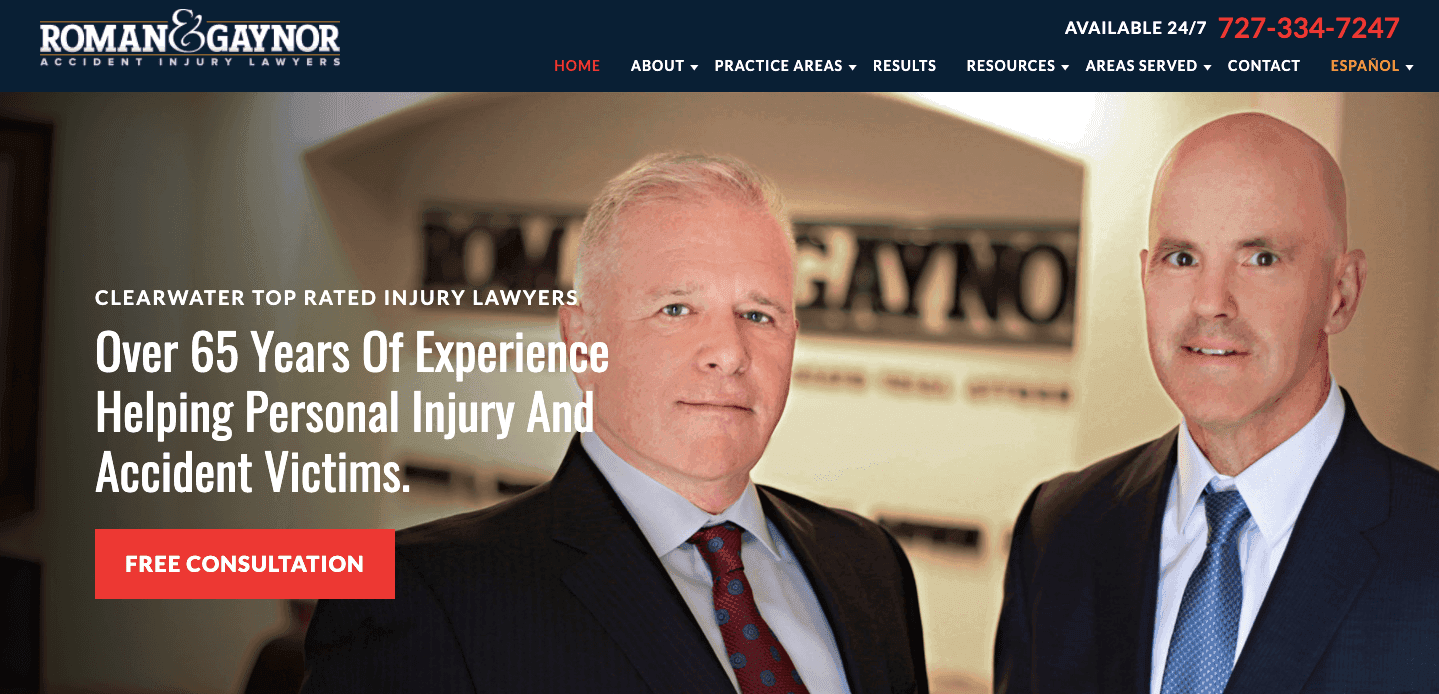 Lawyers sell their services for thousands, which is why offering anything for free online does not make much sense. However, a consultation is a great way of building a relationship with the client with minimal investment of resources.
The Allen Law firm even offers a free live chat that allows you to ask questions to a real person for free.
Lawyers sell their services for thousands, which is why offering anything for free online does not make much sense. However, a consultation is a great way of building a relationship with the client with minimal investment of resources.
The Allen Law firm even offers a free live chat that allows you to ask questions to a real person for free.
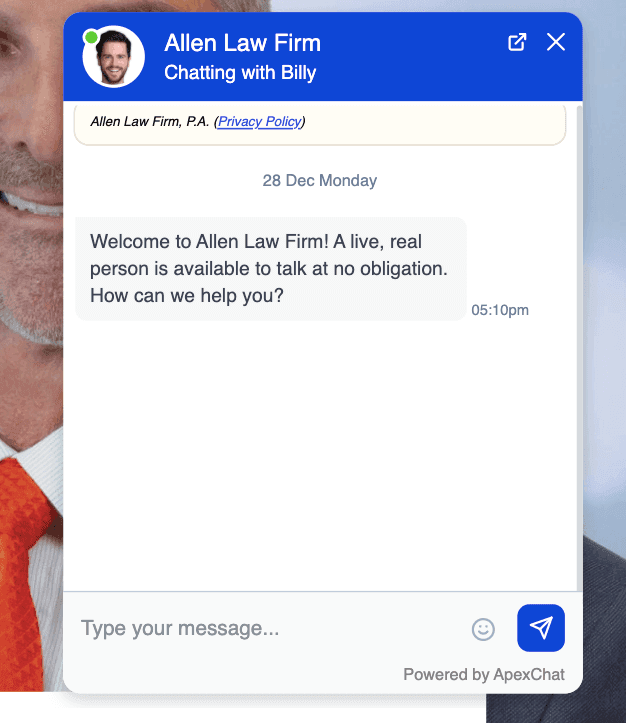 The point of these consultations, demos, and live chats is to give customers the ability to build a relationship with the company without having to part with their money. When it comes to spending big amounts, people want to be sure they trust where the money is going. A free consultation or a quick demo could be what convinces them.
The point of these consultations, demos, and live chats is to give customers the ability to build a relationship with the company without having to part with their money. When it comes to spending big amounts, people want to be sure they trust where the money is going. A free consultation or a quick demo could be what convinces them.
A free consultation or a quick demo could be what convinces people to trust where their money is going.
Click To Tweet5. Hulu
 The Hulu sales funnel is all about the classic free trial. The online streaming service gives new customers a month to test run their services, after which they will be automatically debited for the months that follow — unless they cancel their subscription.
The Hulu sales funnel is all about the classic free trial. The online streaming service gives new customers a month to test run their services, after which they will be automatically debited for the months that follow — unless they cancel their subscription.
What Does This Sales Funnel Look Like?
Most Hulu customers discover the brand through social media, paid ads, or blog posts. Once a customer enters the first step of the sales funnel (awareness), they are directed to the Hulu landing page, which includes a CTA that very clearly offers a month free. The free services allow customers to watch various TV shows, movies, and Hulu Originals on up to two devices at a time. However, unlike companies, like Netflix, that have the traditional “one month free trial”, Hulu has done things a bit differently. The length of your trial depends on the service you go for — the more expensive the service, the shorter the trial.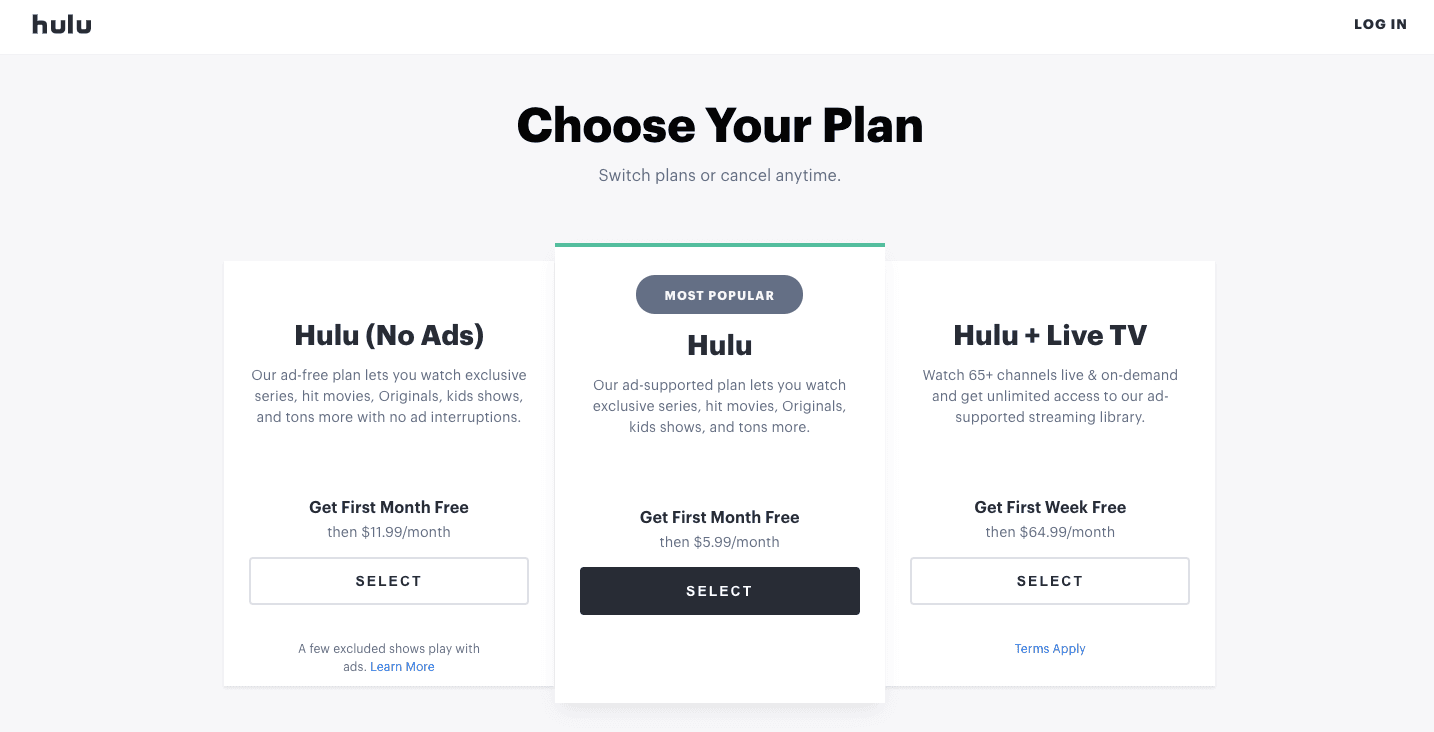 The basic Hulu packages allow users a one month trial, while the “Hulu + Live TV” package that allows users to access over 65 different live channels only offers a week free.
This is a pretty great way of allowing users to try out every service without wasting too many resources on trials.
The Uniqode QR code generator has also seen great results following a similar strategy. The tool lets you create multiple QR codes for free during the 14-day trial. After this, you can choose to go for the premium paid model.
The basic Hulu packages allow users a one month trial, while the “Hulu + Live TV” package that allows users to access over 65 different live channels only offers a week free.
This is a pretty great way of allowing users to try out every service without wasting too many resources on trials.
The Uniqode QR code generator has also seen great results following a similar strategy. The tool lets you create multiple QR codes for free during the 14-day trial. After this, you can choose to go for the premium paid model.

Who Should Use This Funnel?
This sales funnel works best for subscription models that can afford to give every user a one-month long trial. After the trial, if a customer decides to stick with the service, Hulu receives a constant stream of passive income every month.6. Kurzgesagt — In a Nutshell
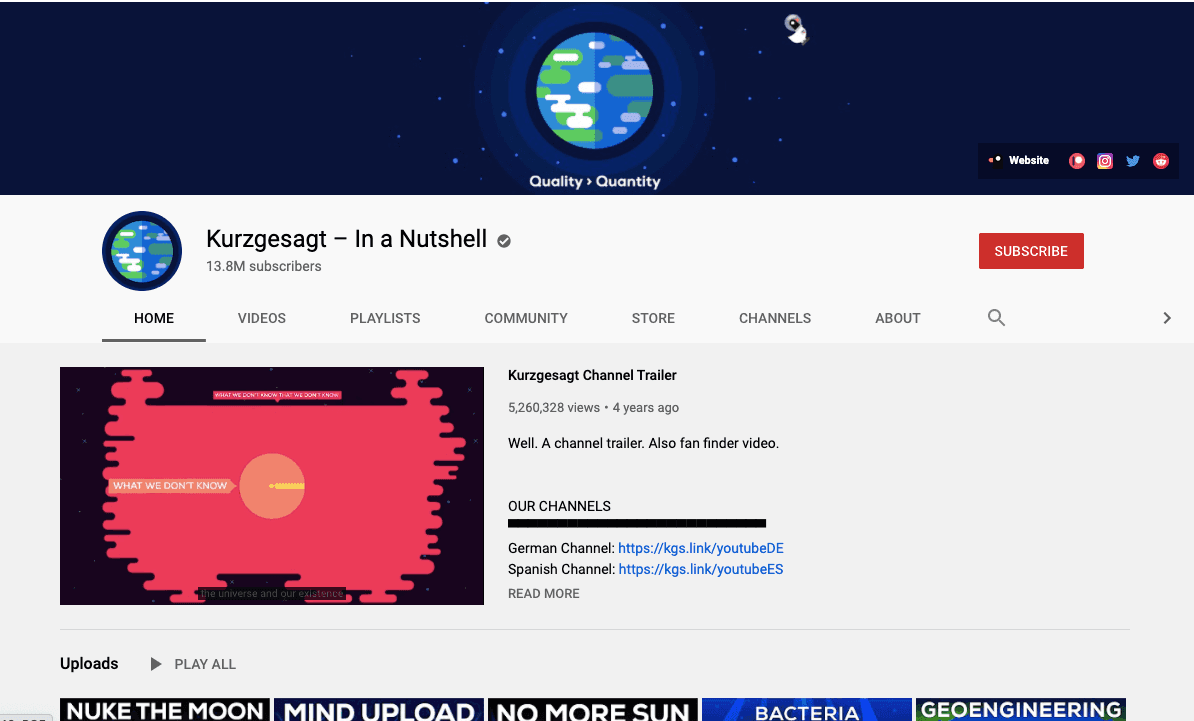 Kurzgesagt is an extremely famous infographic show on YouTube that delves into topics, like the earth getting kicked out of the solar system and alien life among plenty of other topics. Their videos reach millions of people every single day, and the most noticeable element of each upload is the amazing graphics that help each piece of information come alive.
At first glance, you would think Kurzgesagt is nothing more than a successful YouTube channel, but you would be surprised to know it is also a digital marketing agency. The agency offers multiple graphic design services, such as explanatory videos and illustrations.
Kurzgesagt is an extremely famous infographic show on YouTube that delves into topics, like the earth getting kicked out of the solar system and alien life among plenty of other topics. Their videos reach millions of people every single day, and the most noticeable element of each upload is the amazing graphics that help each piece of information come alive.
At first glance, you would think Kurzgesagt is nothing more than a successful YouTube channel, but you would be surprised to know it is also a digital marketing agency. The agency offers multiple graphic design services, such as explanatory videos and illustrations.
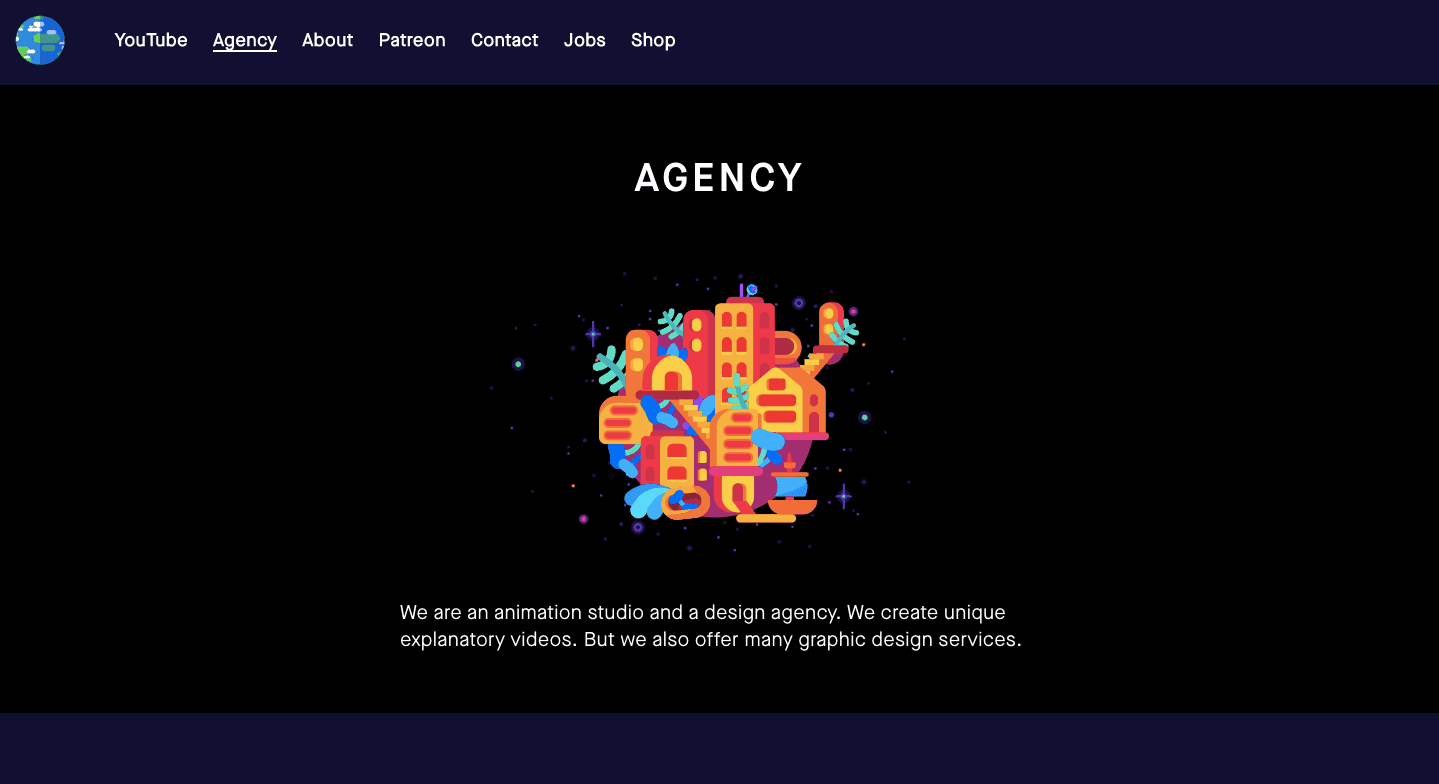 Their clients include some pretty big companies, such as Microsoft and Lyft, and a lot of those clients discovered Kurzgesagt through their YouTube channel.
Their clients include some pretty big companies, such as Microsoft and Lyft, and a lot of those clients discovered Kurzgesagt through their YouTube channel.
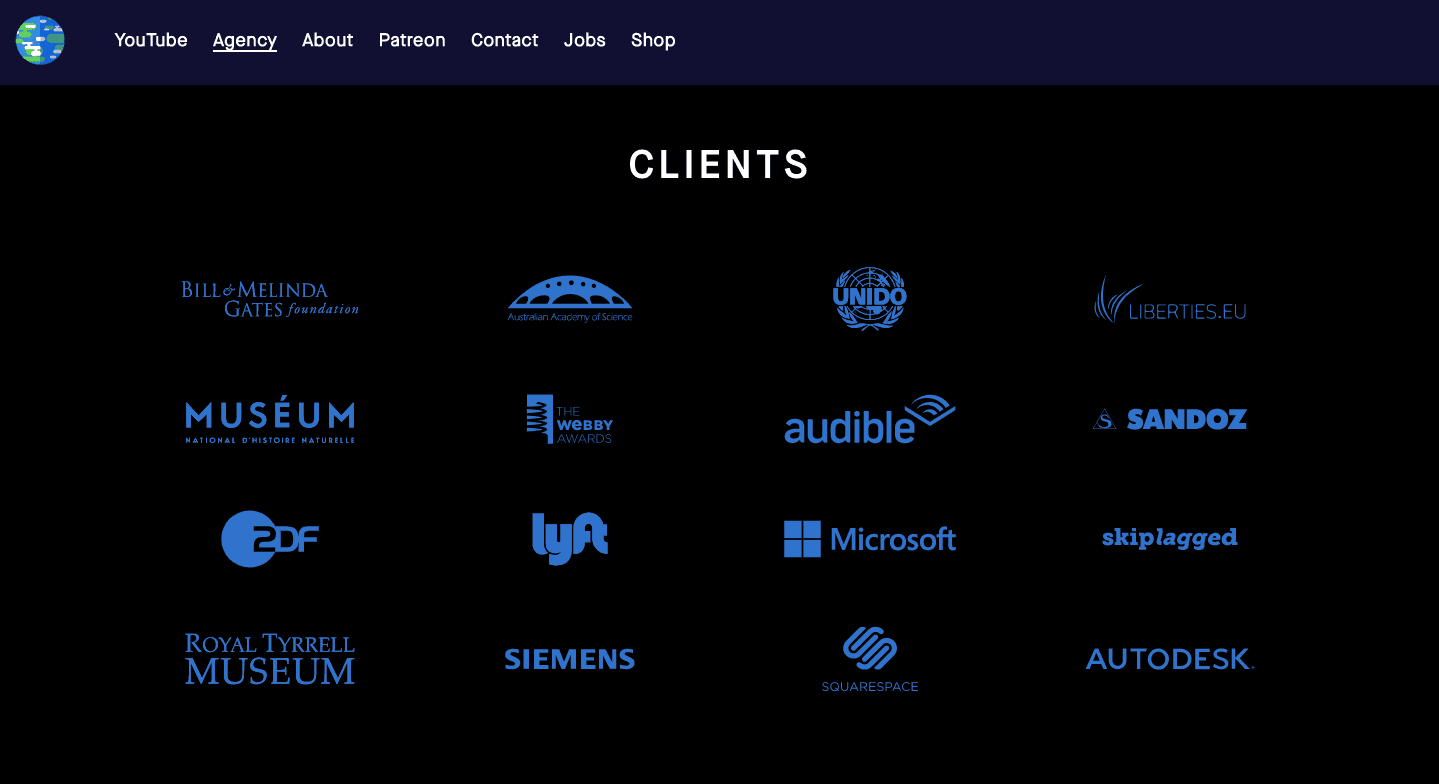
What Does This Sales Funnel Look Like?
People who watch Kurzgesagt’s videos on YouTube get a kind of live demo of their services. If they are impressed with what they see, they can get in contact with them through their website and hire them.Who Should Use This Funnel?
This sales funnel can work for anyone in the creative space. A singer, dancer, graphic designer, producer, advertising agency, photographer, etc. — they are all people/companies that could benefit from putting themselves out there. Showcasing what they are capable of doing can best be done through social media, and this is exactly what Kurzgesagt has managed to do.7. Mixergy
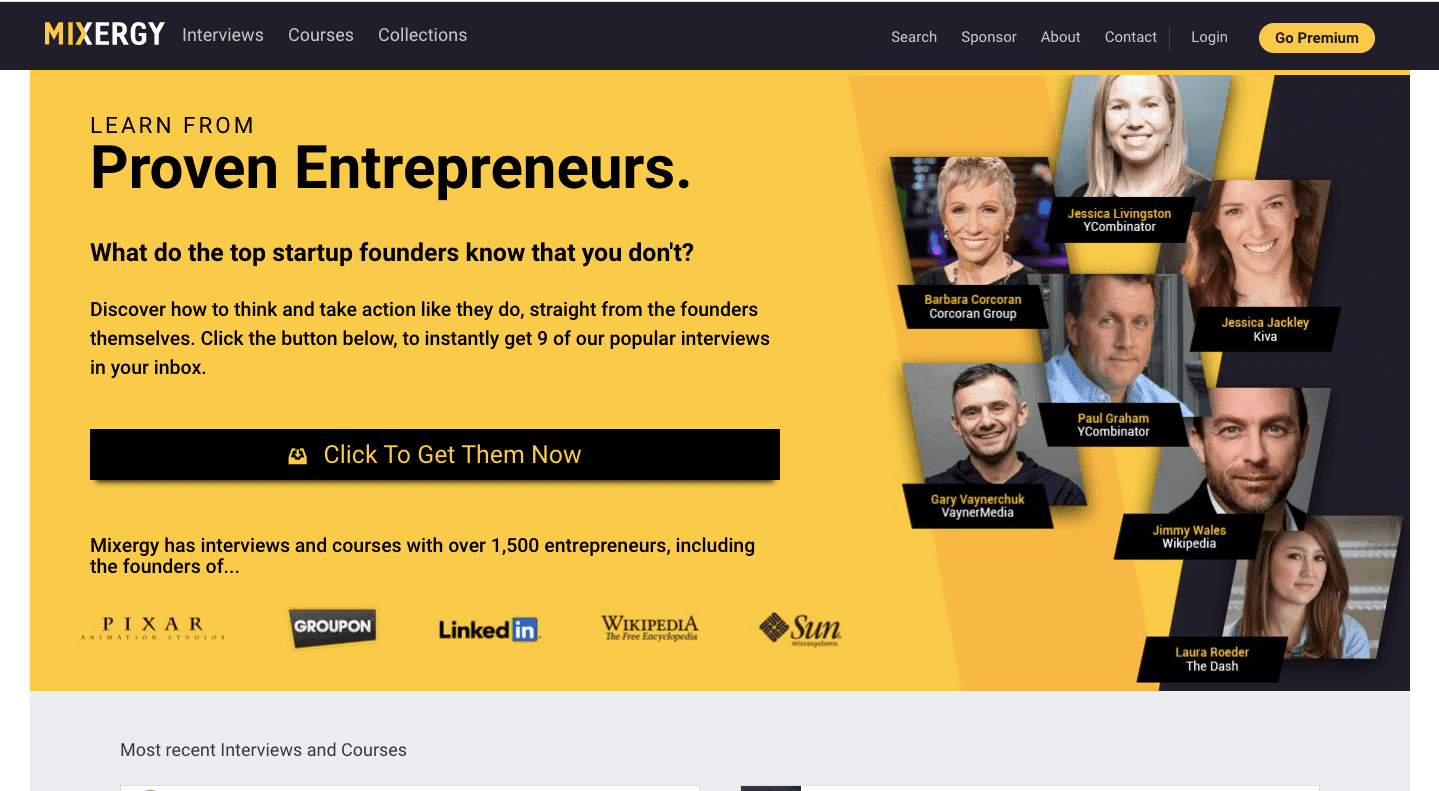 Mixergy sells online courses and interviews from famous entrepreneurs that have amassed large followings. The funnel starts with a free video interview that you can receive by giving them your email address.
You will then receive a link to the interview in your inbox. Once Mixergy has your email address and you become a lead, they will then move on to the lead nurturing process where they try and get leads to sign up for their premium version.
Mixergy sells online courses and interviews from famous entrepreneurs that have amassed large followings. The funnel starts with a free video interview that you can receive by giving them your email address.
You will then receive a link to the interview in your inbox. Once Mixergy has your email address and you become a lead, they will then move on to the lead nurturing process where they try and get leads to sign up for their premium version.

